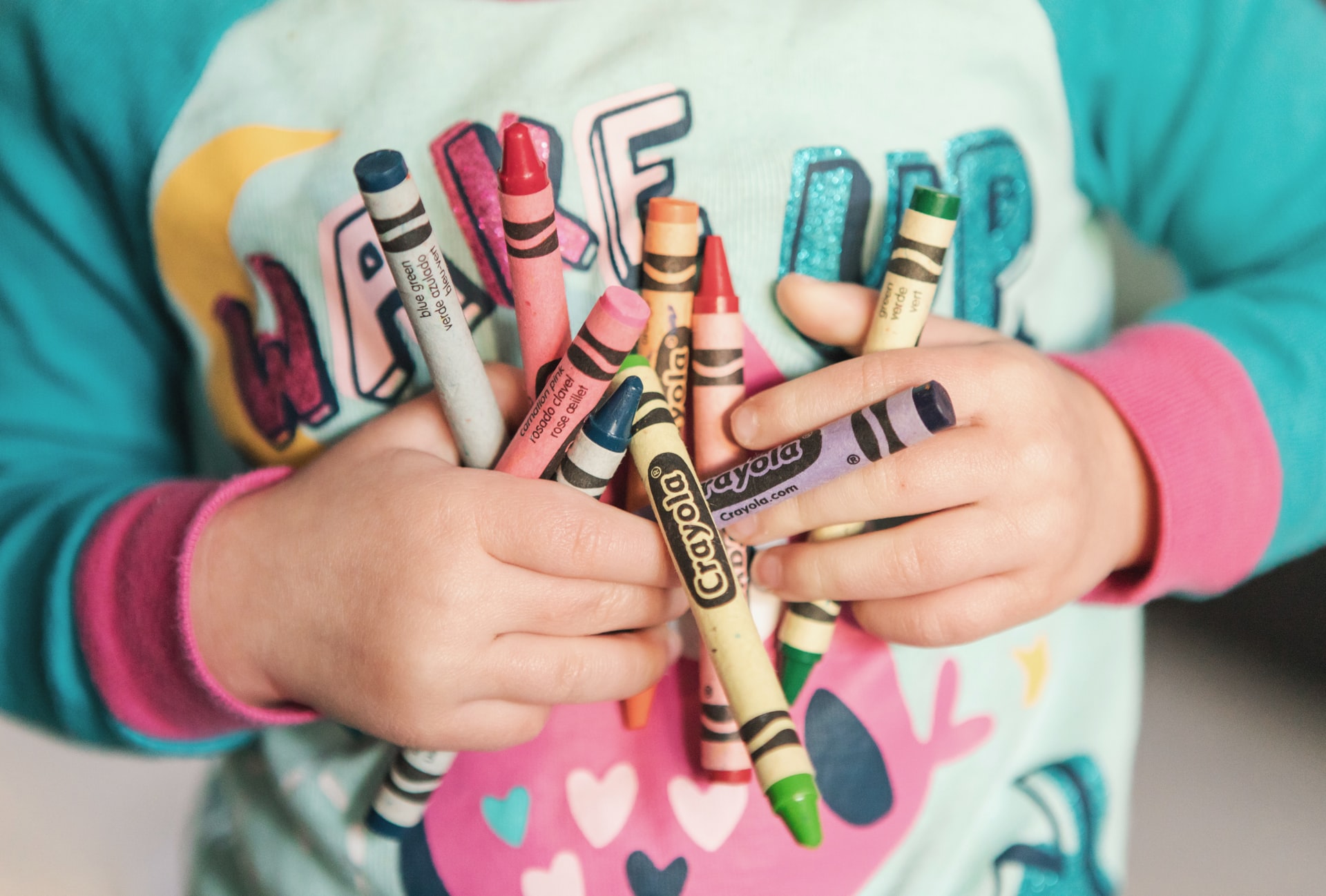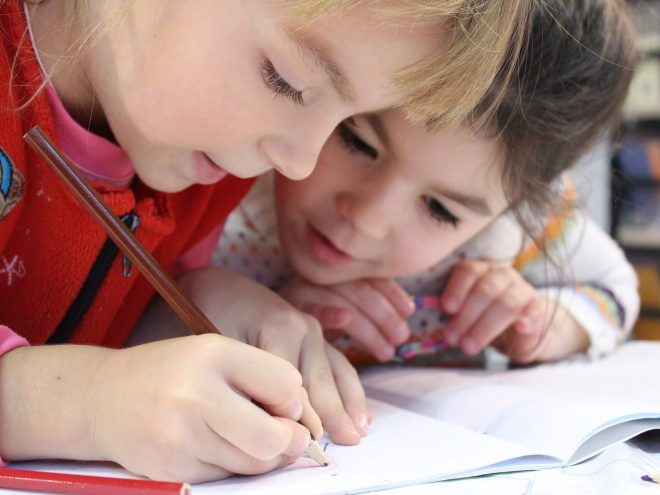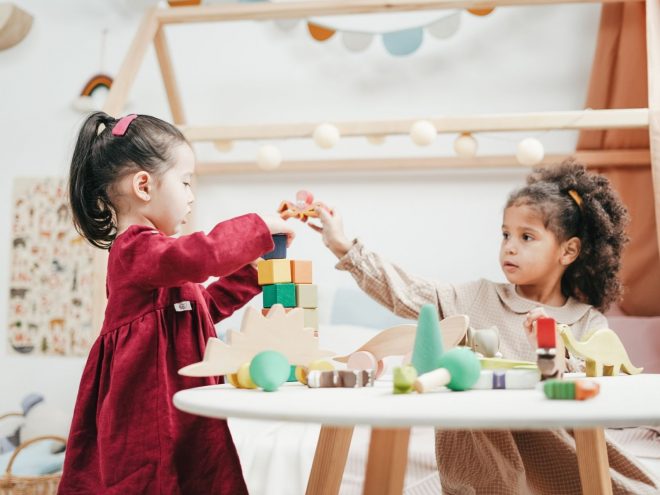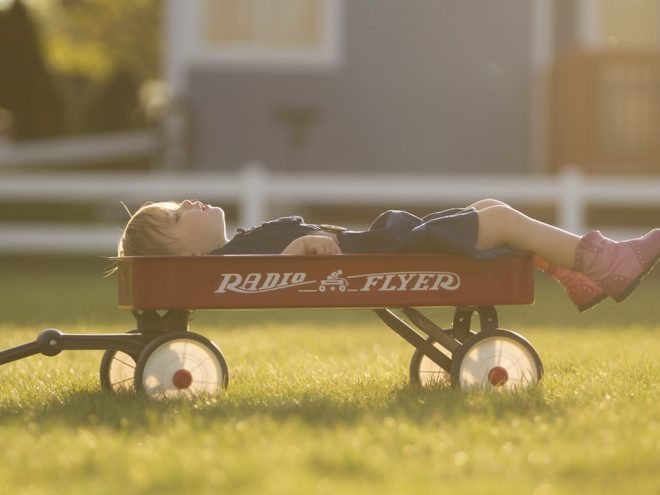The ability to self-soothe and relax are essential skills for children to become healthy, resilient adults. Mindfulness activities for kids teach them techniques they can use at home or at school to become more calm and resilient. The following activities teach children the basic techniques of mindfulness. These can be done in order or one at a time, as a group or with just one child.
Movement
This activity helps children focus on the way their bodies move and realize they are able to intentionally relax their muscles. First, tell children to picture a leaf in the fall. Ask: “What color is your leaf?” “What size is it?”Have children demonstrate what it looks like to be still on the end of the branch. Coach them to relax their muscles and focus on what it feels like to be airless. Next, direct children to imagine how it feels to be a leaf, connected to a branch, gently moving in the breeze. Tell them to move like the leaf and sway back and forth. Ask children to pretend the leaf is blown from the tree in a strong wind. Have them move as the leaf with the wind — twirling, circling etc. Tell children to imagine the leaf settling on the grass. Have them relax wherever they are — some may choose to sit or lay down, some may just stand still. Next, have children picture the wind blowing again. Ask: “How does the leaf look as it moves from resting to tumbling through the wind?” Have children demonstrate the leaf tossing in the wind once again. Finally, have children settle once more on the ground. Ask: “Were some muscles easier to relax than others?” Have children tell a neighbor sitting next to them about their experience.
Touch
To prepare, pick a variety of small gourds that have unique-to-the-touch qualities — smooth, bumpy, perfectly round, oddly shaped etc. While keeping their eyes closed, bring each child to the “patch” to touch and feel the gourds. Have children pick their favorite, based only on touch. Have kids picture what the gourd might look like. Ask them to describe color, shape, size etc. Ask: “Is it bumpy or smooth?” “Is it big or small?” “Is it round or flat?” Next, have children touch the gourd to their cheek. Ask: “Does it feel different to your cheek than it did to your fingers?” Have children share their experience with a neighbor.
Breathing
This activity teaches children to focus on their breathing and teaches them how deep breathing increases relaxation. Focusing on a behavior, like breathing, gives children something tangible to experience physically. Ask them to lie down and put the gourd on their tummies. Tell them to watch as it rises and falls with each breath. Now, tell them to breathe in and see how high they can make the gourd rise, and then breathe out and see how low they can make the gourd fall. Do this for three-five rounds.
Scent
Scent has a remarkable impact on mood, emotion and even concentration. This activity isolates the sense of smell. To prepare, choose scents associated with fall. Try a candle, spices or aromatherapy oils. Popular scents are cinnamon, pumpkin, clove, apple and vanilla. If continuing on from the Breathing activity, tell kids to remove the gourd and close their eyes. Otherwise, direct children to lie down on the floor and close their eyes. Have children imagine the little gourd on their tummies, rising and falling. Wave the first scent near each child’s nose. Ask: “What does this scent remind you of?” “Can you picture what it smells like?”As you use three-five different scents, ask children to note the ways in which each scent smells different from the last. Coach them with words like spicy, sweet and fruity. This activity transitions nicely into a mindfulness meditation, or you can have children discuss what each scent made them picture.
Meditation
This activity teaches self-soothing through picturing a safe and happy place. As kids are lying down with their eyes closed, preferably after a warm-up like the Scent activity mentioned before, have kids picture a place that makes them feel safe and happy. Ask: “Where do you feel most safe?” “Are you alone or with someone?” Next, have them imagine more details of their safe place. Ask: “Is it inside or outside?” “What do you hear?” “What do you smell?”Allow the children to stay in their safe place for three-five breaths. Afterward, have them talk to a neighbor about what they saw, or if they prefer, have them write about it. These activities don’t have to be longer than a few minutes in order to be effective. The key is to be specific, intentional and consistent. Happy fall and happy mindfulness!





